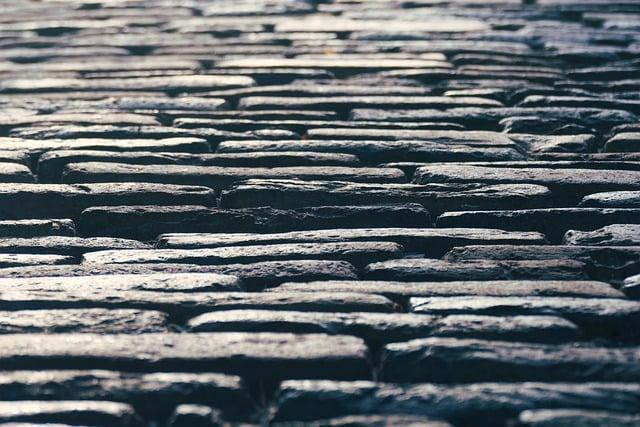Amidst the relentless roar of the English Channel and the vast, haunting expanse of Dunkirk’s beaches, Christopher Nolan’s cinematic masterpiece brings history to life with breathtaking authenticity. ”Dunkirk” is not just a retelling of the miraculous World War II evacuation; it’s an immersive experience crafted with meticulous attention to detail. By filming on the very sands where soldiers once stood, Nolan transforms the screen into a visceral tapestry of tension and survival. This article delves into the ingenious methods and unwavering dedication behind capturing the heart-pounding war sequences on location, revealing how the landscape itself became a silent yet powerful character in this epic tale.
Recreating History on Real Battlefields
To capture the visceral reality of war, director Christopher Nolan chose to film Dunkirk on the very beaches where the historic evacuation unfolded. The decision to shoot on location added an unparalleled authenticity to the film’s breathtaking sequences. Pristine stretches of sand and the roaring English Channel served as a haunting backdrop, allowing the crew to recreate the chaos and tension experienced by soldiers in 1940.
Key locations included:
- Mole Pier: The iconic wooden pier was reconstructed to mirror its wartime appearance, providing a crucial setting for the film’s evacuation scenes.
- Dunkirk Beaches: Utilizing the actual beaches added a layer of realism, with the natural landscape echoing the harrowing conditions faced by troops.
- Weymouth Harbour: Serving as a stand-in for Dover, this location brought to life the naval aspect of the evacuation.
By filming on these historic grounds, Nolan not only paid homage to the bravery of those involved but also immersed audiences in a gripping cinematic experience that blurs the line between past and present.

Capturing Authenticity with Practical Effects
One of the most remarkable aspects of Dunkirk is its dedication to realism through the use of practical effects. Christopher Nolan, known for his commitment to authenticity, chose to shoot the film on the very beaches of Dunkirk, where the actual evacuation took place. This decision brought a palpable sense of urgency and reality to the scenes. The filmmakers utilized a variety of techniques to achieve this:
- Real Ships and Aircraft: Instead of relying on CGI, the production team employed actual World War II-era ships and planes. This choice added a layer of historical accuracy and visceral intensity.
- Explosive Practical Effects: From the sounds of gunfire to the blast of bombs, practical effects were meticulously crafted to immerse the audience in the chaos of war.
- Weather and Natural Elements: Embracing the unpredictable weather of the French coastline, the crew captured the raw and unforgiving nature of the environment, enhancing the film’s tension.
By leveraging these practical effects, Dunkirk not only honored the historical event but also delivered a cinematic experience that felt tangibly real and emotionally compelling.

The Challenges and Triumphs of On-Site Filming
Filming on location presents a unique set of challenges and triumphs, particularly for a production as ambitious as “Dunkirk.” The decision to shoot on the actual beaches of Dunkirk, where history unfolded, added layers of authenticity but also complexity. Weather unpredictability was a constant hurdle, as the crew faced everything from unexpected rain showers to strong winds that threatened to disrupt carefully planned shots. The tides, too, played a crucial role, demanding precise timing and coordination to capture the epic scale of the evacuation.
Despite these challenges, the on-site filming brought unparalleled realism to the movie. The authenticity of the landscape allowed actors to immerse themselves fully, enhancing performances and the emotional impact on audiences. Key triumphs included capturing breathtaking aerial shots that showcased the vastness of the operation, made possible by the expansive real-world setting. The use of actual WWII-era vessels further grounded the film in reality, creating a visceral experience that studio sets simply couldn’t replicate.
- Weather unpredictability - From rain to winds, nature’s whims tested the crew’s resilience.
- Tide timing – Precision in planning was crucial to align with natural rhythms.
- Immersive performances – Authentic locations allowed for deeper actor engagement.
- Historic accuracy – Real WWII vessels and settings enhanced the film’s credibility.

Lessons Learned from Dunkirk’s Production Team
- Authenticity Over Convenience: Filming on the actual beaches of Dunkirk required overcoming logistical challenges but added an unparalleled level of authenticity. The production team learned that real locations can breathe life into the narrative, creating a visceral connection for audiences.
- Embrace Natural Elements: The unpredictable weather and tides of the English Channel became unexpected allies, enhancing the film’s tension and realism. By embracing these elements, the team discovered the power of nature in storytelling.
- Collaborative Innovation: Working with historians, military advisors, and local authorities, the team fostered a spirit of collaboration that enriched the film’s historical accuracy and operational efficiency.
- Adaptive Filmmaking: The crew’s ability to adapt on-the-fly to the ever-changing conditions exemplified the importance of flexibility in large-scale productions. This adaptability not only ensured the project stayed on schedule but also inspired creative solutions that enhanced the film’s impact.

